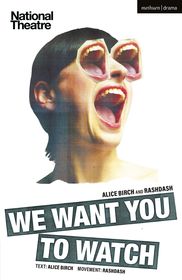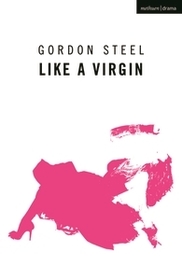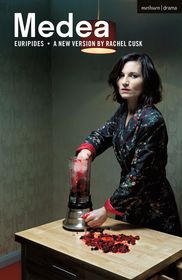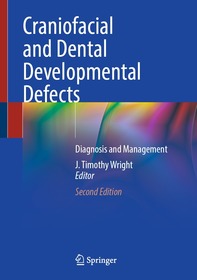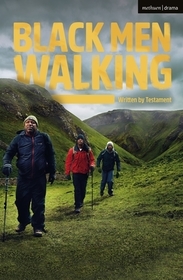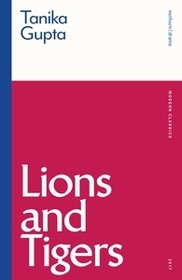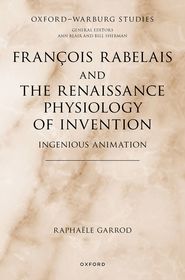
François Rabelais and the Renaissance Physiology of Invention
Ingenious Animation
Series: Oxford-Warburg Studies;
- Publisher's listprice GBP 99.00
-
47 297 Ft (45 045 Ft + 5% VAT)
The price is estimated because at the time of ordering we do not know what conversion rates will apply to HUF / product currency when the book arrives. In case HUF is weaker, the price increases slightly, in case HUF is stronger, the price goes lower slightly.
- Discount 10% (cc. 4 730 Ft off)
- Discounted price 42 568 Ft (40 541 Ft + 5% VAT)
Subcribe now and take benefit of a favourable price.
Subscribe
47 297 Ft

Availability
Estimated delivery time: In stock at the publisher, but not at Prospero's office. Delivery time approx. 3-5 weeks.
Not in stock at Prospero.
Why don't you give exact delivery time?
Delivery time is estimated on our previous experiences. We give estimations only, because we order from outside Hungary, and the delivery time mainly depends on how quickly the publisher supplies the book. Faster or slower deliveries both happen, but we do our best to supply as quickly as possible.
Product details:
- Publisher OUP Oxford
- Date of Publication 31 January 2025
- ISBN 9780192866691
- Binding Hardback
- No. of pages336 pages
- Size 240x165x20 mm
- Weight 700 g
- Language English 633
Categories
Short description:
François Rabelais and the Renaissance Physiology of Invention: Ingenious Animation explores the medical poetics of inventive, embodied thinking or ingenuity instantiated in Rabelais's Gargantua and, mostly, his Quart livre.
MoreLong description:
François Rabelais and the Renaissance Physiology of Invention: Ingenious Animation explores the medical poetics of inventive, embodied thinking or ingenuity instantiated in Rabelais' Gargantua and, mostly,in his Quart livre. It unsettles established dichotomies in Rabelaisian scholarship between Rabelais's 'lowly' laughter and his 'high', erudite message and reassesses the Rabelaisian grotesque by highlighting its debts to grotesque ornament, this marginal yet omnipresent Renaissance visual art.
Bodily functions are a trademark of Rabelais's poetics. Scholarship has read them as signs of carnivalesque inversion, in line with the Bakhtinian grotesque, or of satirical degradation: in both instances, the 'lowly' is opposed to the 'high', the belly to the head. Yet for a physician like Rabelais, the 'head' or the brain as the site of cognition is not opposed to what is below it: the chest as the site of breathing, the belly and its nether regions as sites of nutrition and generation. In Renaissance medicine, these are integrated physiological systems whose products fuel each other's operations, including cognition.
Read through this lens and alongside his diagnosis of the healthy or diseased culture of his time (rotting scholasticism, the humanist digestion of the classical heritage, or the schismatic convulsions shaking Christianity) Rabelais's fictions testify to his reflexive investigation into how culture results from physiological processes fuelling the inventive ability of the human animal, made manifest in pedagogical, artistic, mechanical, and spiritual 'inventions'. They display the life (rather than the truth) of culture stemming from human ingenia, that is, wits conditioned by biological natures. While these might be idiosyncratic, their animation is fuelled and shaped by the food one eats, the air one breathes, the places one inhabits, the company one keeps.
In this respect Rabelaisian fiction is grotesque in a period sense. With its emphasis on hybrid forms capturing the metamorphic powers of animation, grotesque ornament reflexively commented on the embodied inventive processes underpinning Renaissance mimesis. Rabelais's fictions display a similar logic: they foreground the inventive powers of ingenious animation and articulate reflexive, often ironic alternatives to the humanist views they alter: a thoroughly embodied anthropology, a naturalist genealogy of cultural production and transmission, a phantastical account of artistic invention as uncanny liveliness.
Table of Contents:
Introduction
Cultural Production as a Natural Process: An Alternative Topography
Ingenuity in Natural Philosophy and Medicine: Lyon-Paris, 1530-50
A Diagnostic in Docility: Quick-Wittedness and Natural Copia in the Torchecul episode (Gargantua XIII)
Popemaniacs (1). Idolatrous Ingenuity: Diseased Animation and Dædalic Art (Quart livre XLVIII-L)
Popemaniacs (2). Grotesque Reflections on Social Ingenuity: Conversation, Gastronomy, Ceremonies. (Quart livre LI-LIV)
En Marge 1
Groignet, The Slashing Tailor. Rabelais's Historiographical Grotesque Against Raphaël's Vatican Stanze
The Fuel of Engines: The Encounter with Gaster (Quart livre LVII-LXII)
En Marge 2
Ingenuity and the Needful, Illiberal Roots of Order: A Rabelaisian Reading of Dürer's Grotesque Trophies
The Breath and the Breeze. Experiencing Death in the Macræons episode (Quart livre XXV-XXVIII)
Animation and the Matter of Voice: The Thawing Words episode (Quart livre LV-LVI)
En Fin. Rabelais and Renaissance Grotesque Ornament
Bibliography
Index



